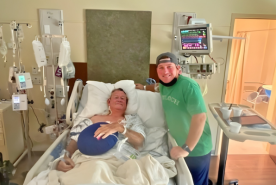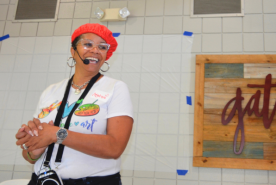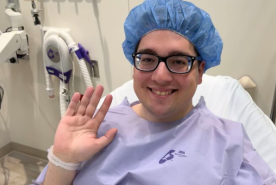April 18, 2023
In 2021, there were 786,000 patients1 living with kidney failure, yet less than 25,0002 received a transplant that year. In 2022, the U.S. finally reached 25,000 kidney transplants3 in one year, but there are still an estimated twelve people dying each day without the opportunity to receive a life-saving transplant.
No one should die while waiting for a kidney, but there aren't enough organs to meet current or future needs. The National Kidney Foundation is determined to change this with our new program, Transplants For All.
Fixing the deceased donation system
Around 1 in 5 deceased donor kidneys are discarded–that's nearly a third of kidneys generously donated but never used.4
Two main reasons are logistics and communication. Organ procurement organizations (OPOs), transplant centers, and the United Network for Organ Sharing (UNOS) don't have a streamlined information-sharing system. As a result, many organs are sent to the wrong place, spend too much time in transport, or arrive damaged.
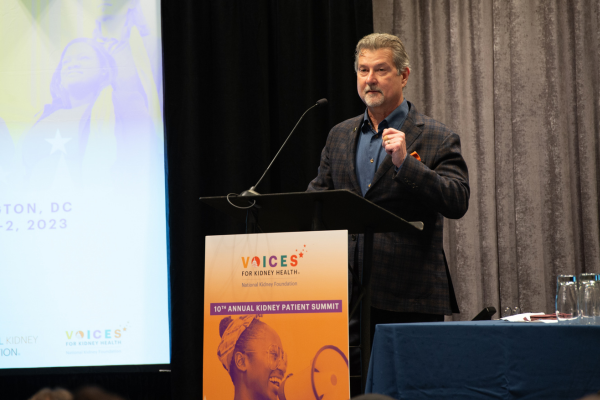
"The kidney health landscape is broken. It needs innovation and better oversight," said Kevin Longino, NKF's Chief Executive Officer. "Patients deserve an equitable, high-performing transplant system that works to maximize the donation and transplantation process. Organ donors and their families who make the selfless decision to save lives through donation deserve a system that honors and preserves their life-saving gift."
We are committed to reimagining the transplant system by:
- Minimizing life-threatening delays in organ transplantation: We encourage new technology and data sharing within the organ procurement and transplant system to ensure organs get to their intended destination quickly and undamaged. Learn how a lack of government oversight in transportation costs lives.
- Maximizing the gift of life through kidney donation: Organ donors and their families make the generous and selfless decision to save lives, yet many kidneys go to waste. Transplant centers decline kidneys that could and should be used to maintain high one-year transplant and patient survival rates. We believe they should be responsible for the number of kidneys transplanted in a year and need a unifying set of rules to determine how to utilize recovered kidneys for transplant.
- Investing in innovative technologies: The NKF Innovation Fund invests in companies focused on ending the transplant wait list, like 34 Lives, whose technology may give donated kidneys an additional 20 hours of viability for delivery and transplantation.
- Supporting new research: Our grants support various clinical research studies that improve patient outcomes. We are developing a new grant for researchers reducing kidney transplant discards.
- Growing education programs on transplant basics: Many people may not know how transplantation works. The Kidney Learning Center's First Steps to Kidney Transplant explains the process, provides access to resources, and more.
Kidney equity involves equal access to care, transplantation, improved health outcomes, education, research, and policy changes to eliminate disparities and promote equitable opportunities for individuals with kidney diseases. This work is the bedrock of our efforts in mitigating health disparities in kidney care and will get us one step closer to achieving KIDNEY EQUITY FOR ALL™. You can support this work by telling the Organ Procurement and Transplantation Network (OPTN) that using race in the equation that "scores" donated kidneys, the Kidney Donor Risk Index (KDRI), harms patients and perpetuates racism in kidney care. Sign the petition now.
Empowering living donation
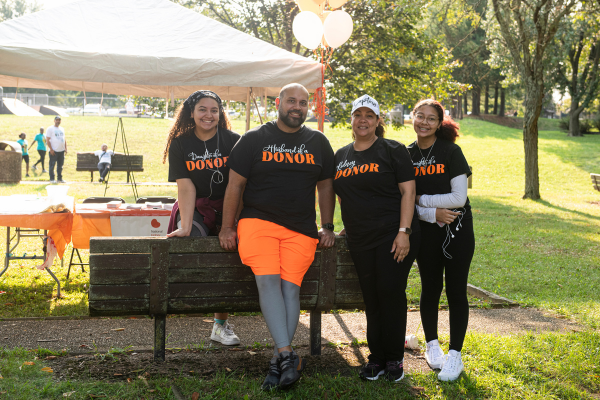
While we work to fix the deceased donor system, we want to increase the number of living kidney donors. Why? Living kidney donations pose little risk to the donor, provide better outcomes to the recipient, and increase the supply of available kidneys.
"A lot of people are scared to donate or even consider living donation because of what could happen. I'm living proof that you can donate your kidney and have a healthy life. My kidney function, eGFR, and creatinine levels are perfect," said Stephenie, a kidney donor.
We are committed to increasing living donations by:
- Educating kidney professionals about living donation: Courses like Ethics: The Role of Behavioral Health in Living Donation teach professionals how to work with living donation candidates.
- Educating the public about living donation: Becoming a living donor may sound scary, but courses in the Big Ask Big Give program like Finding a Living Donor and Becoming a Living Donor dispel myths while highlighting the risks and benefits of donating.
- Lessening the financial burden of living donation: The Living Donor Circle of Excellence highlights companies that help remove the financial barrier to donating by providing employees with at least 80% of their salary for four or more weeks of recovery time should they donate.
- Eliminating insurance discrimination against living kidney donors: We’re working with state and federal lawmakers to pass the Living Donor Protection Act. This legislation would ensure living donors aren't charged higher premiums or denied life, disability, and long-term care insurance.
- Partnering with programs that make it easier to become a living donor: The National Kidney Registry offers various programs and protections to support living donors through the donation process, making the experience as safe and convenient as possible.
Facilitating equity in transplantation

Earlier diagnoses can help people preserve their kidney function and stay off dialysis, improving their quality of life and lessening the immediate need for kidney transplants. Sadly, too many people, especially in marginalized communities, don't know they have kidney disease until their kidneys have failed. Learn more about social determinants of health.
"Inequities exist at every phase of the kidney care continuum. Poorer communities, communities of color, and rural communities often face a delayed diagnosis of kidney disease and have a deficiency in slowing the progression of kidney disease," said Morgan Reid, NKF Transplant Policy and Strategy Director. "Transportation, child and elder care, and a person's social determinants of health, such as education and health literacy, could delay referral and evaluation for transplantation."
The first step in creating a more equitable system was eliminating the race-based eGFR equation. Black or African American patients now have better access to dialysis and the kidney transplant waitlist, but there is still work to do.
"When it comes to transplants, doctors give African Americans this look like they're thinking I shouldn't tell them about transplants because they can't afford it," transplant recipient Thelma said. "Transplants weren't the primary treatment offered to me, especially with my first transplant. They only talked about dialysis. I feel that happens to many African American and Black patients because of all the people I talked to at the dialysis center. Whether I can or can't afford medication as an African American or Caucasian, the first question should be, 'What can we do to help you?'"
Frustratingly, Thelma’s experience is far too common. We are working to change that.
We plan to make Transplants For All a reality by:
- Addressing low transplant reimbursement rates: We are working to create a payment model with financial incentives that would encourage transplant centers to accept higher Kidney Donor Profile Index (KDPI) kidneys and promote seamless post-transplant care between transplant centers and general nephrologist for improved graft and patient survival.
- Working with Congress to pass transplant equity legislation: The Health Equity and Accountability Act (HEAA) supports data transparency and addresses barriers to equitable referral and pre-transplant preparation.
- Updating the Kidney Donor Risk Index (KDRI): We will advocate for removing race from clinical algorithms that assess organ suitability for deceased donor kidneys from Black or African Americans in hopes of expanding the number of kidneys for transplantation.
- Empowering dialysis technicians to encourage transplantation: Our Professional Education Resource Center is creating additional transplant education and certification for dialysis technicians.
- Launching supportive programs for Spanish-speaking kidney patients: NKF Peers is a peer-mentoring program that connects people with kidney disease with trained mentors who have been there themselves. While it is currently only offered in English, it will soon be launched in Spanish.
- Supporting paired exchange across all centers: Paired transplant exchanges allow people to get a kidney from another donor who is not a match for their intended recipient.
Together, we can ensure everyone who needs a transplant, gets a transplant.
Sources
1“Kidney Disease Statistics for the United States .” National Institute of Diabetes and Digestive and Kidney Diseases, U.S. Department of Health and Human Services, https://www.niddk.nih.gov/health-information/health-statistics/kidney-disease.
2Cindyyoung. “Kidney Transplants Set New Record in 2021 Following Policy Change.” UNOS, April 4, 2022, https://unos.org/news/in-focus/2021-kidney-transplants-set-record-with-policy-change/.
3Organ Procurement and Transplantation Network. (2023, January 10). OPTN. 2022 organ transplants again set annual records; organ donation from deceased donors continues a 12-year record-setting trend. Retrieved January 26, 2023, from https://optn.transplant.hrsa.gov/news/2022-organ-transplants-again-set-a.
4Lentine KL, Smith JM, Lyden GR, Miller JM, Dolan TG, Bradbrook K, Larkin L, Temple K, Handarova DK, Weiss S, Israni AK, Snyder JJ. OPTN/SRTR 2022 Annual Data Report: Kidney. Am J Transplant. 2024 Feb;24(2S1):S19-S118. doi: 10.1016/j.ajt.2024.01.012. PMID: 38431360

